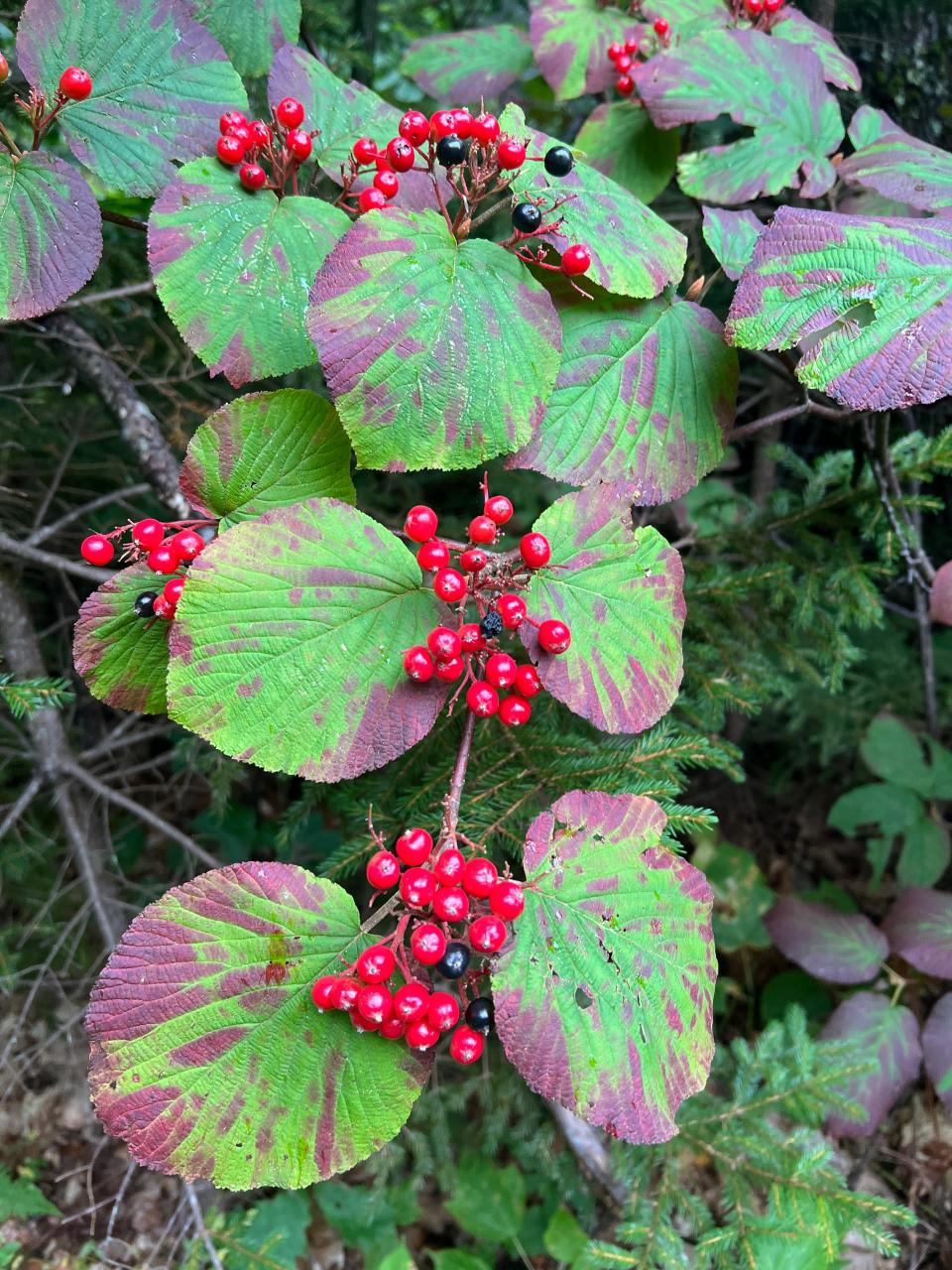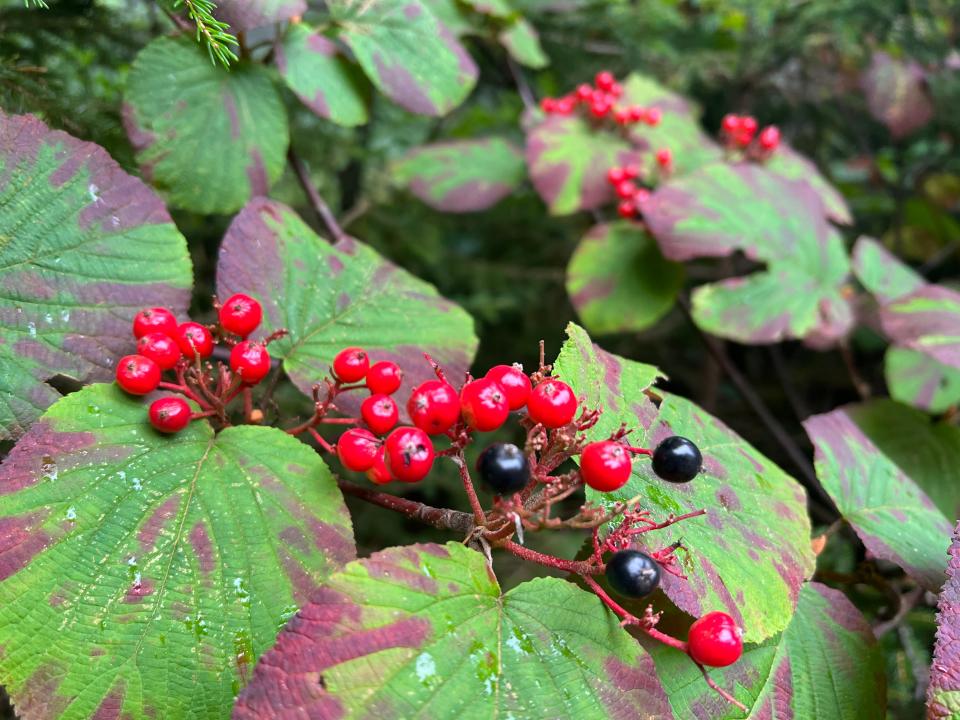How to find and enjoy hobblebush berries on your next hike: What to know in Nature News
I recently went on a foraging hike with my son, Sam. He is an expert forager. Foragers are great to have along on hikes because the hike quickly morphs into a hunt for wild edibles. Sam’s, and my, foraging philosophy is that the fun is in identifying the potential edibles, only collecting anything that is in abundance, or, ideally, invasive.
Our goal for this hike was to harvest grapes from the huge, tangled mass of grapevines along part of the trail. These vines belong to Concord grapes, a cultivated variety whose ancestors were the native fox grapes (Vitis labrusca).
Sadly, we had either missed the season, the bears had beaten us to them, or it was a bad year for grapes, for we only found a handful of semi-ripe grapes. We did find blackberries, chokecherries, and purple-flowered raspberries galore, along with one that was new to me, hobblebush berries.

Hobblebush (Viburnum alnifolium) is a viburnum, a group that consists of more than 150 species and numerous cultivars (many of us have these cultivars in our gardens). Viburnums include deciduous and evergreen shrubs and small trees and are mostly native to North America or Asia. Some New England natives include maple leaf viburnum (you can buy this locally for your garden), arrowwood, nannyberry, highbush cranberry and hobblebush.
One way to recognize this group is by their oppositely arranged leaves and the cluster of flowers typically arranged in an umbel (like an umbrella).

I have loved hobblebush for as long as I have hiked in the mountains in the Northeast. They are a constant friend on the trail, easy to recognize with their trailing habit that threatens to trip you if you aren’t careful, with their big funky-looking buds that burst into fragrant white flowers. This time of year, the large leaves are starting to change color to vibrant shades of bronze-red and purple, and the pollinated flowers have formed clusters of bright red berries that will ripen to black. That is when they are edible! I can’t believe I never knew they were edible. Learning this was a hike highlight for me.
According to Sam, “You can eat these raw off the bush; they are one of the few edible berries you can still snack on during those chilly October hikes.” This is still a little too early for hobblebush berries. We found just a couple of ripe berries and tried them. They tasted like something between a raisin and a date, or maybe a prune.

Another New England native viburnum, the wild raisin, is also edible and is so named because of its taste profile. In his article about fall fruits (Northern Woodlands, autumn 2019), Benjamin Lord has an interesting tidbit about the ripening of the fruit and the smell of the leaves. He writes, “Be patient, and wait through September until the berries turn black and become wrinkled. The leaves will turn brownish-purple and begin to fall ... and also stink. Wild raisins and other viburnums are renowned for an odor reminiscent of sweaty socks that graces autumn wetlands.” I had always wondered where that smell came from!
Nature News: Jimsonweed, toxic plant on NH invasive species 'watch list'
While recognizing wild edibles is a great skill and makes a hike in the woods more interesting, it is really important to think before actually foraging. These ripe foods taste good to us but also taste good to wildlife, who generally need them more than we do. The wildlife value of hobblebush is fairly high. A variety of birds (for example, ruffed grouse, brown thrashers, cedar waxwings) and mammals (red squirrels and chipmunks) eat the fruit and shelter in the tangled thickets these can form in the understory. Browsers like deer eat the twigs and leaves, it is one of the preferred winter foods for deer. Hobblebush is also a larval host for the spring azure butterfly. So, my thought is, why not try to add these to my backyard wildlife garden? Both seeds and plants are available online. If I really want to eat some, I can grow enough for me and my wild neighbors.
Susan Pike, a researcher and an environmental sciences and biology teacher at Dover High School, welcomes your ideas for future column topics. Send your photos and observations to spike3116@gmail.com. Read more of her Nature News columns online at Seacoastonline.com and pikes-hikes.com, and follow her on Instagram @pikeshikes.
This article originally appeared on Portsmouth Herald: Foraging for hobblebush berries: What to know in Nature News

